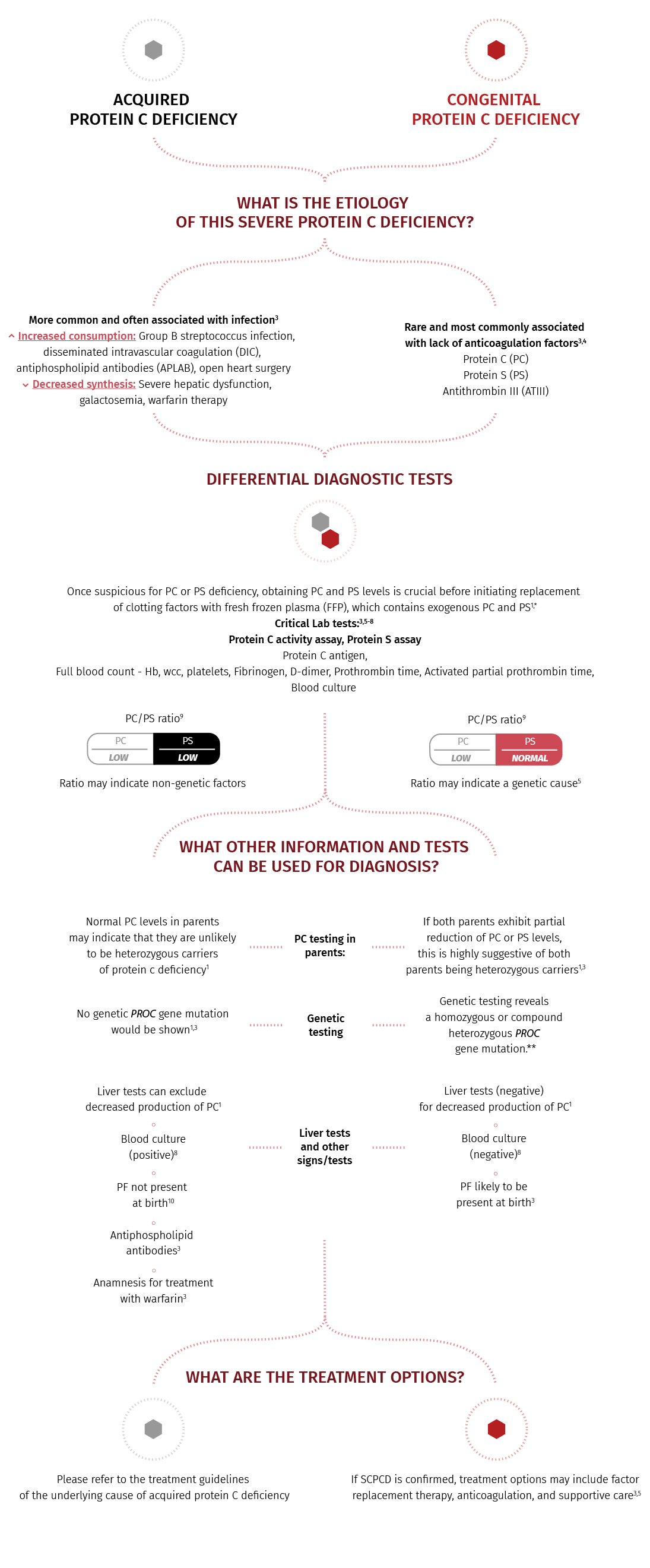
What to consider when facing purpura fulminans
key learnings for the management
of purpura fulminans
This information has been assembled by Takeda from the published literature. It may reflect varying clinical practices and is not intended to be a substitute for clinical guidelines and training
Purpura fulminans results from severe protein c deficiency,
which may be acquired or inherited (congenital)1-3

For information only. Diagnosis should be based on clinical guidance and training. Treatment decisions should always be based on the label of approved medications, and clinical training and expertise.Learn more about managing SCPCD
*Distinguishing between congenital and acquired PC and PS deficiency may prove difficult in the acute setting1.
**Genetic testing of the child and family members can be useful to confirm the diagnosis, but it is not readily available in most centres and the results would not be timely to guide management of these critically ill patients.
References:
-
Findley T, et al. Acquired Versus Congenital Neonatal Purpura Fulminans: A Case Report and Literature Review. J Pediatr Hematol Oncol. 2018;40(8):625-627
-
Goldenberg N, Manco-Johnson M. Protein C deficiency. Haemophilia. 2008;14(6):1214-1221.
-
Price VE, et al. Diagnosis and management of neonatal purpura fulminans. Semin Fetal Neonatal Med. 2011;16(6):318-22.
-
Özkan G, et al. Acute Kidney Injury in case of Purpura Fulminans Developing Secondary to Antithrombin 3 Deficiency. J Nippon Med Sch. 2018;85(1):56-59.
-
Chalmers E, et al. Purpura fulminans: recognition, diagnosis and management. Archives of Disease in Childhood. 2011;96(11):1066-1071.
-
Khor B, et al. Laboratory tests for protein C deficiency. Am J Hematol. 2010;85:440-442
-
Tairaku S, et al. Prenatal genetic testing for familial severe congenital protein C deficiency. Hum Genome Var. 2015;2:15017.
-
Rhodes A, et al. Surviving Sepsis Campaign: International Guidelines for Management of Sepsis and Septic Shock: 2016. Intensive Care Med. 2017;43(3):304-377.
-
Libourel EJ, et al. Protein C/S ratio, an accurate and simple tool to identify carriers of protein C gene mutation. Br J Haematol. 2002;118:615-618.
-
Veldman A, et al. Human protein C concentrate in the treatment of purpura fulminans: a retrospective analysis of safety and outcome in 94 pediatric patients. Crit Care. 2010;14(4):R156.
C-ANPROM /INT/ /5460- November 2019
